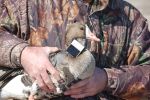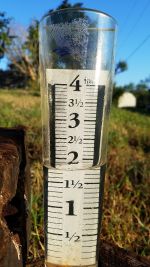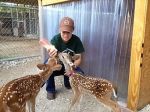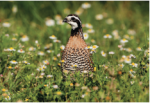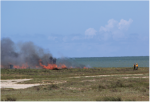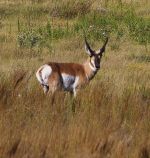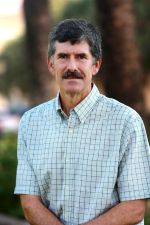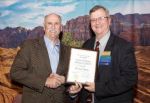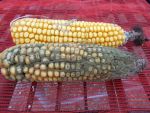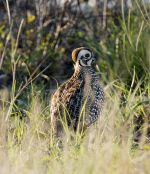
All News
The University of Missouri and Texas A&M University-Kingsville are collaborating on a project to track geese, in North America and Western Europe, with technologies fitted-to-neck collars to learn more about the decisions geese make during their migration. The team will be studying how those decisions affect population numbers, if at all. The goal is to gain a deeper understanding of the geese in both locations, with insights into how decision making explains population change in other genetically similar species.
We are on the tail-end of summer. The 100 degree temperatures of July and August are fading behind expectations of cooler weather and the upcoming hunting season. Despite good fawn production in recent years, this year’s deer season will be influenced by the droughts of 2009 and 2011 because the low fawn crops of those years reduced the number of mature bucks in deer herds across Texas.
As many know, bobwhites and scaled quail are extensively studied at the CKWRI. To help bridge some gaps in our understanding of parasites infecting these gamebirds, students in Alan Fedynich’s lab have spent the last 4 years gathering information on helminth parasites in South Texas. Two M.S.
Providing high-quality forage for cattle and large wildlife species can be challenging on some rangelands when vegetation becomes mature and too coarse to be eaten. This is a common problem in gulf cordgrass communities. Gulf cordgrass is a highly productive perennial grass native to the Texas Coastal Prairies. When young, gulf cordgrass can provide high quality forage for cattle. However, as it matures the leaf blades become stiff and spine-like with low nutritional value.
Pronghorns currently are found in about 27 counties in the Texas Panhandle. Although the fleet-footed animal called an “antelope” by many folks has long been an iconic resident of the plains, we know very little about the movements, spatial distribution, and habitat use of pronghorns in the Panhandle. Once a vast shortgrass prairie that seemed unending to travelers in the 18th century, the Panhandle landscape today is a patchwork of prairie, crops, and small towns. Much of the cropland is irrigated out of the Ogallala aquifer, an incredible and extensive underground lake that has been tapped by farmers and urbanites alike for decades.
Kingsville, TX (Feb. 7, 2017) - Dr. David G. Hewitt has been selected as the new Leroy G. Denman, Jr. Endowed Director of Wildlife Research at the Caesar Kleberg Wildlife Research Institute. Dr. Hewitt has been with the Institute since 1996 and most recently served as the Stuart W. Stedman Chair for Whitetailed Deer Research where he focused on wildlife nutrition and physiology, ecology and management of large mammals, and promoting wildlife-human coexistence.
Dr. Fred C. Bryant of Kingsville, Texas, received the Sustained Lifetime Achievement Award at the Society for Range Management’s (SRM) 70th Annual Meeting held in St. George, Utah, January 29 – February 2, 2017. The Sustained Lifetime Achievement Award is presented by the Society to members for long-term contributions to the art and science of range management and to the Society for Range Management
It should come as no surprise that wildlife ranch managers, especially in southern Texas, love their bobwhite quail. Unfortunately, populations of northern bobwhites have steadily declined in the United States, prompting wildlife managers to lend a helping hand by providing supplemental feed. But is feeding quail a well-intended act of kindness or a misguided action?
The Montezuma quail is a secretive gamebird native to the mountainous regions of Mexico and the Southwestern United States. In Texas, the Montezuma quail can be found in the mountains (Davis, Del Norte and Glass) and hills of West Texas and the southern Edwards Plateau. They have been studied primarily in Arizona, Mexico and, to a lesser extent, West Texas. However, little research has been conducted on this species in the Edwards Plateau.
